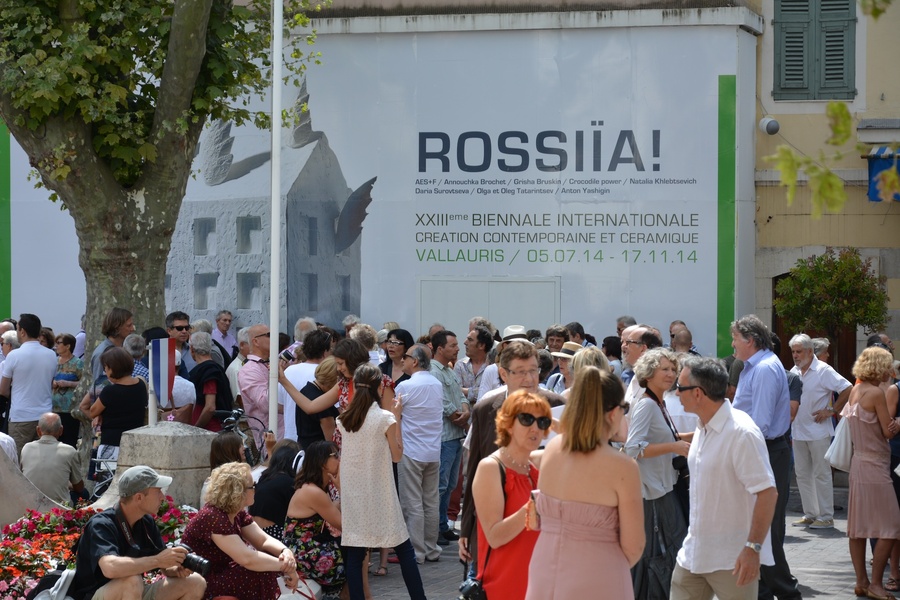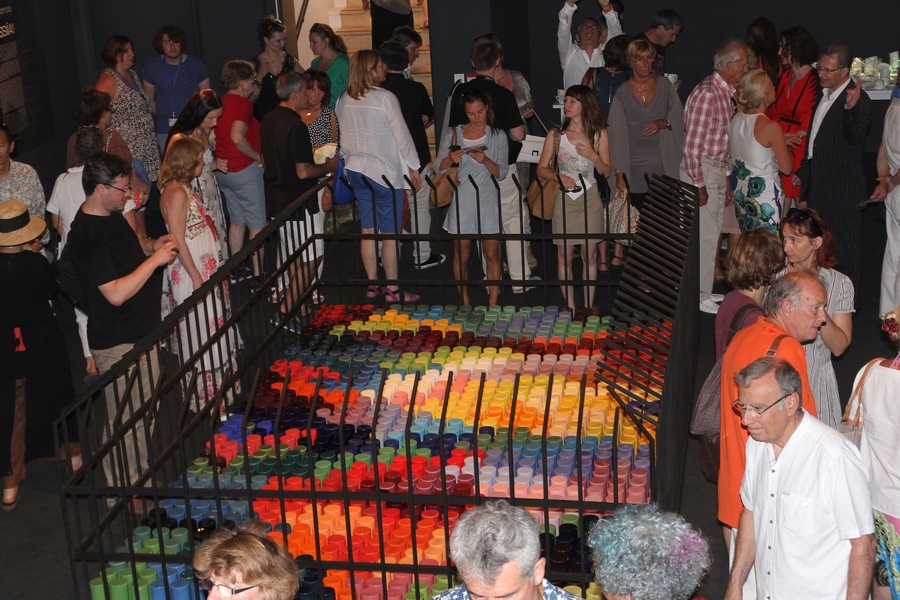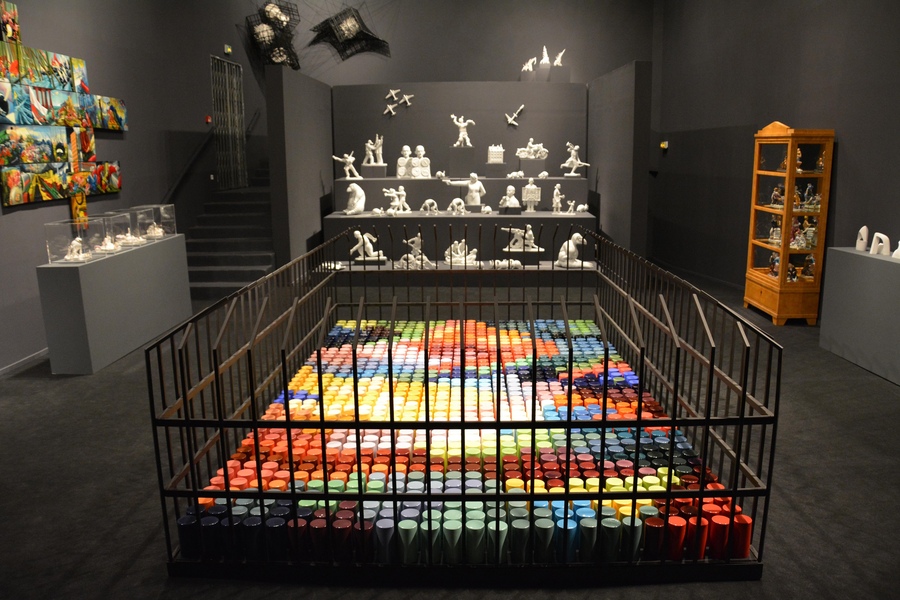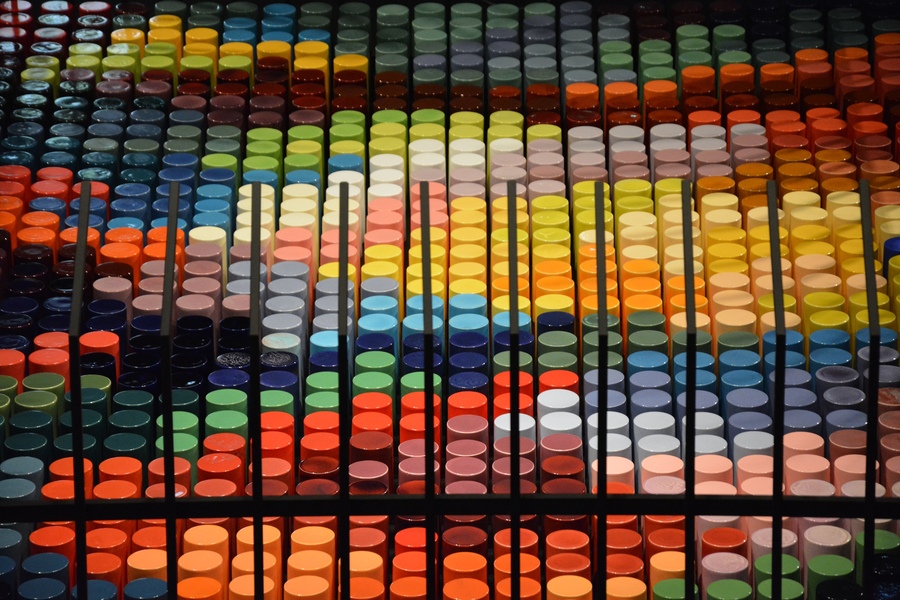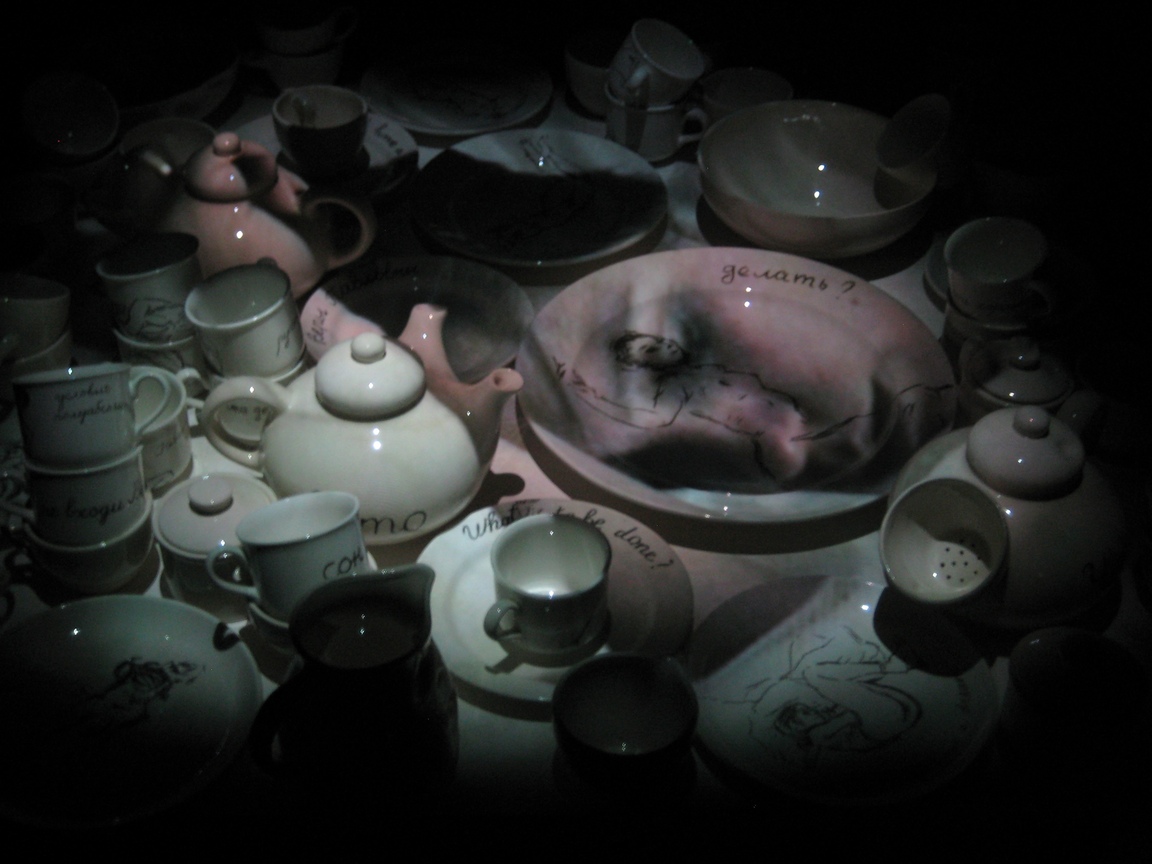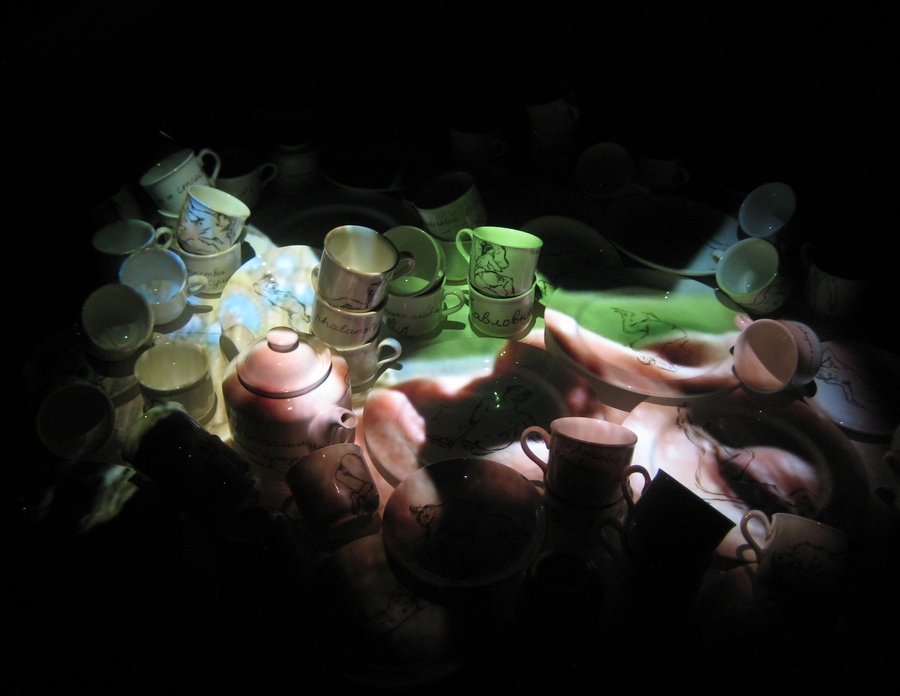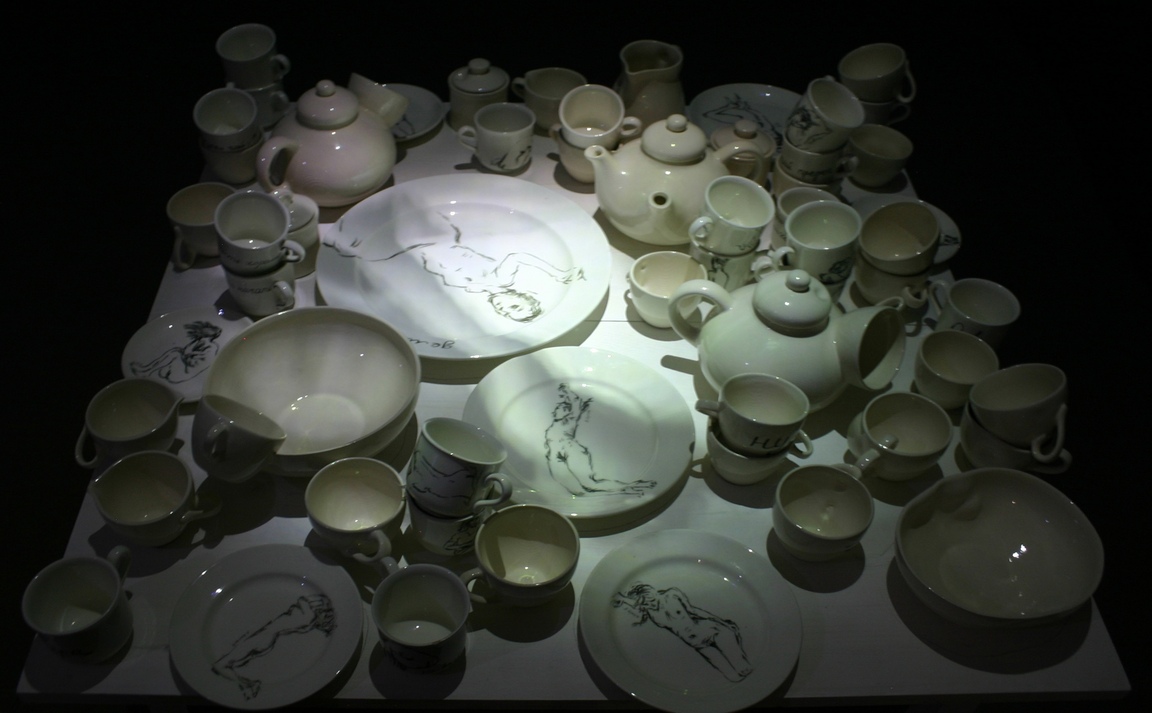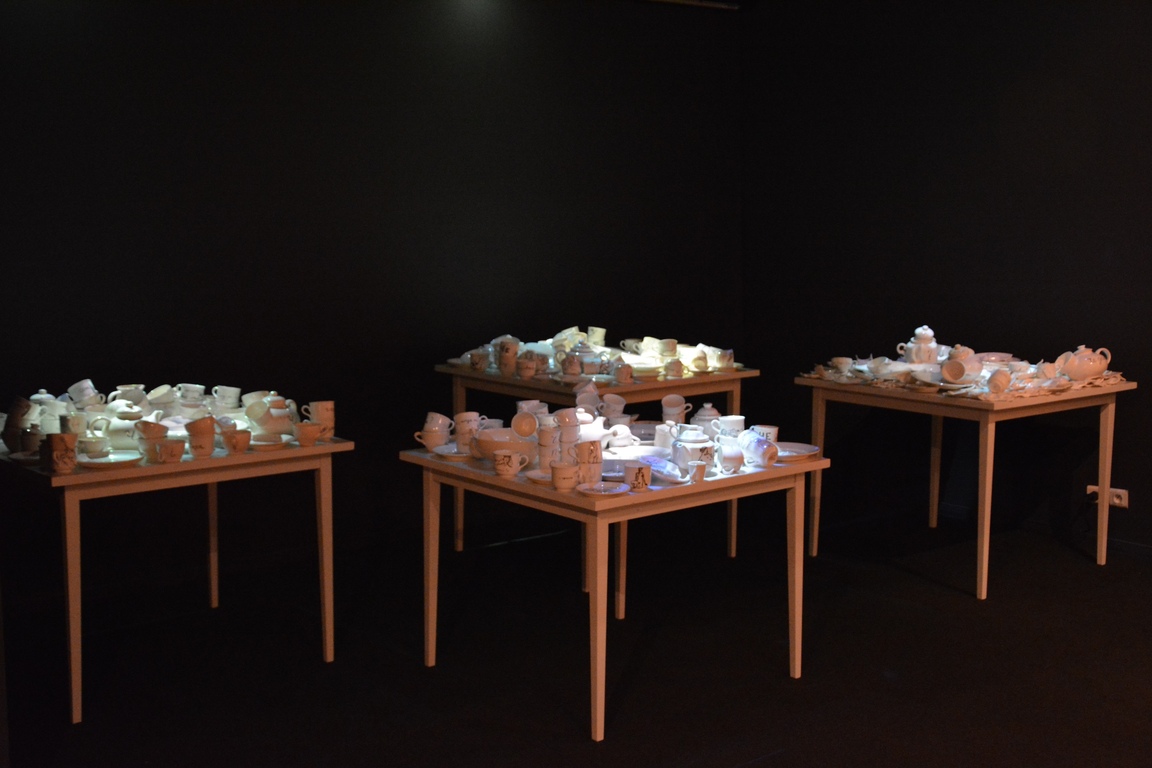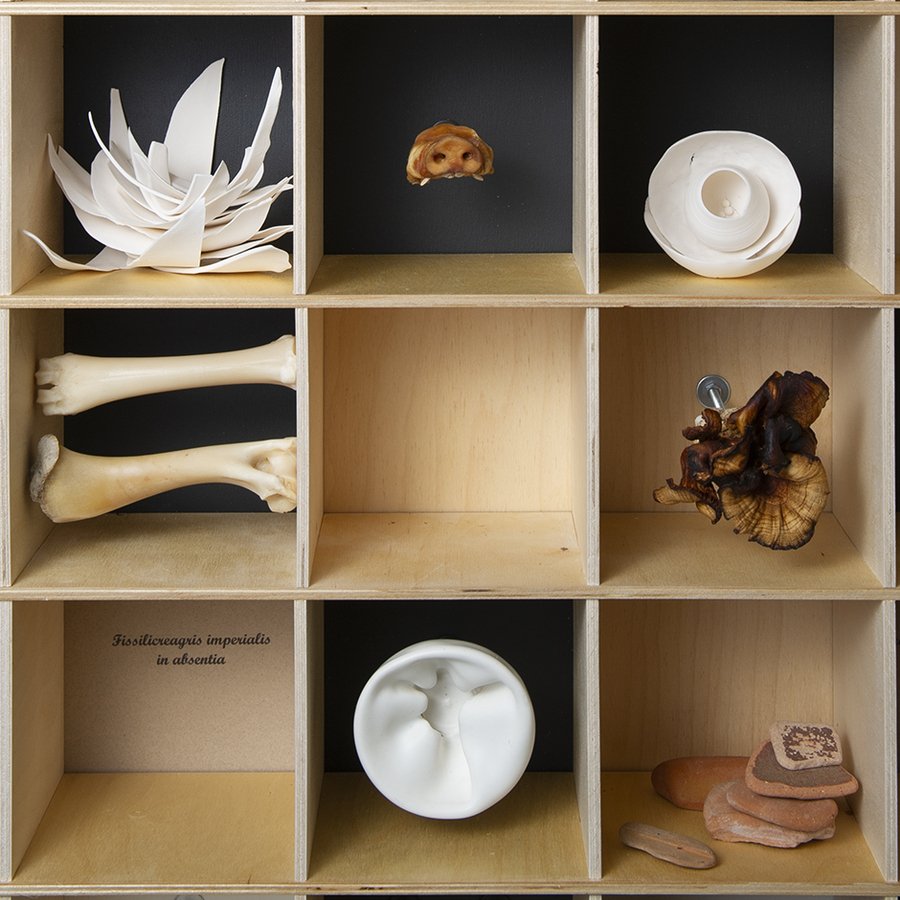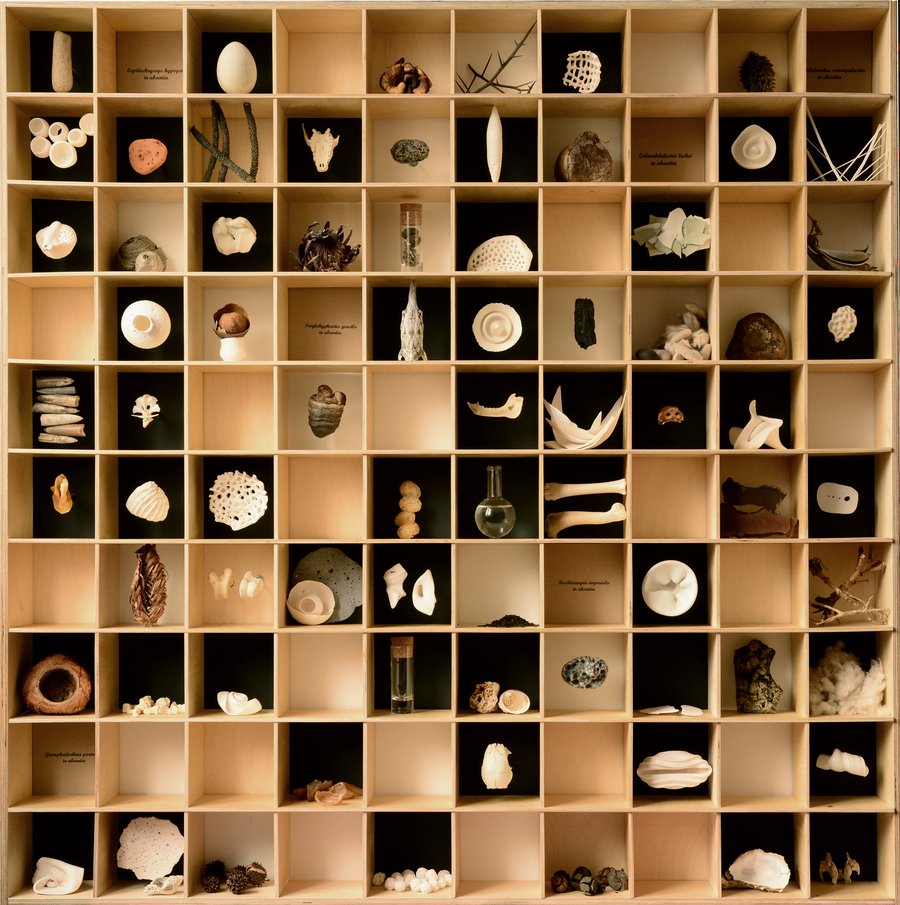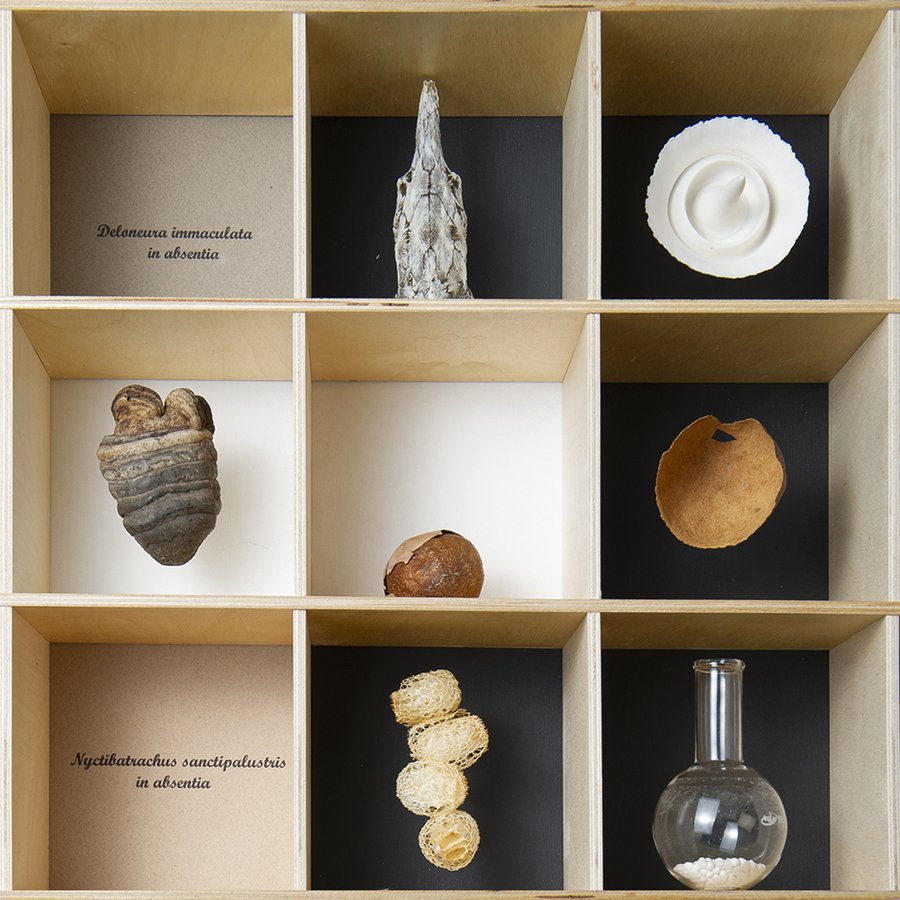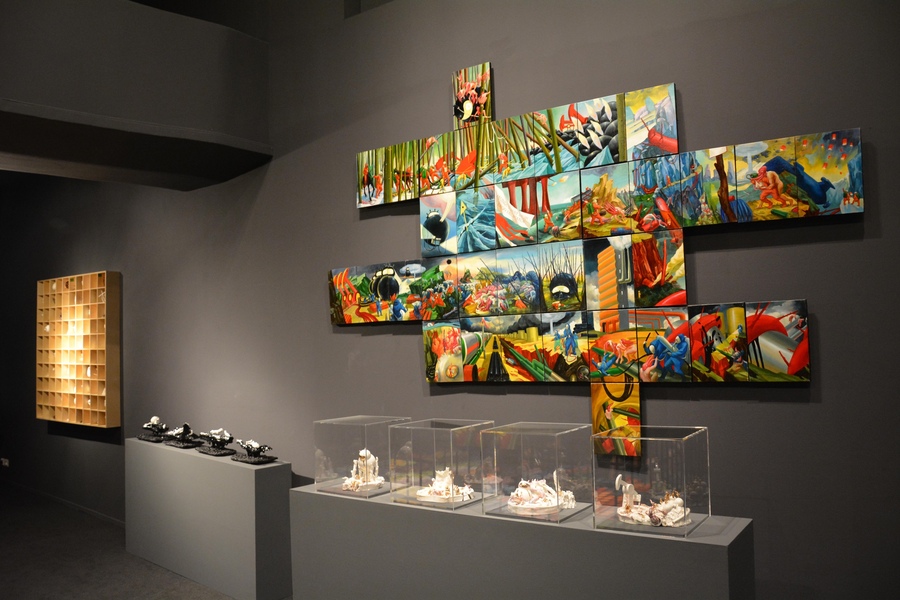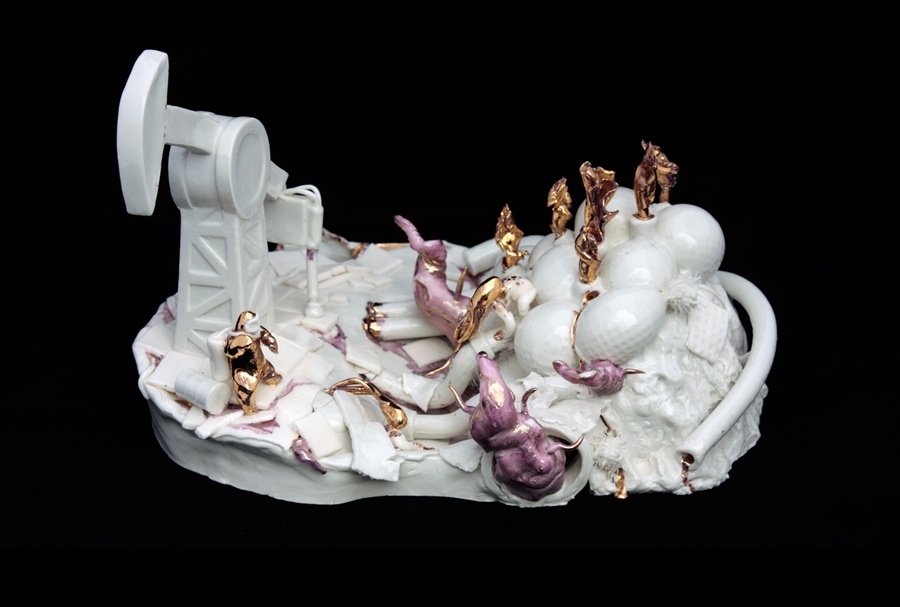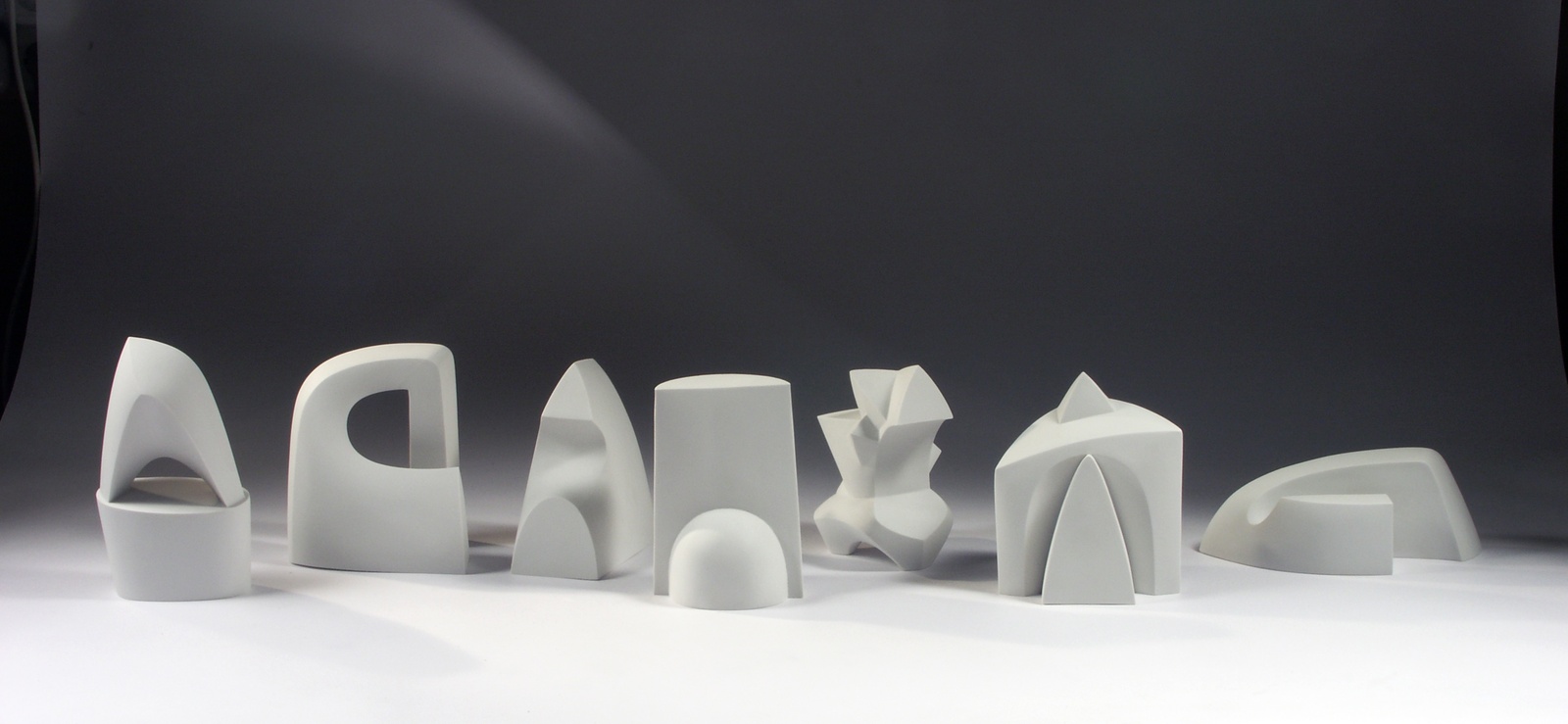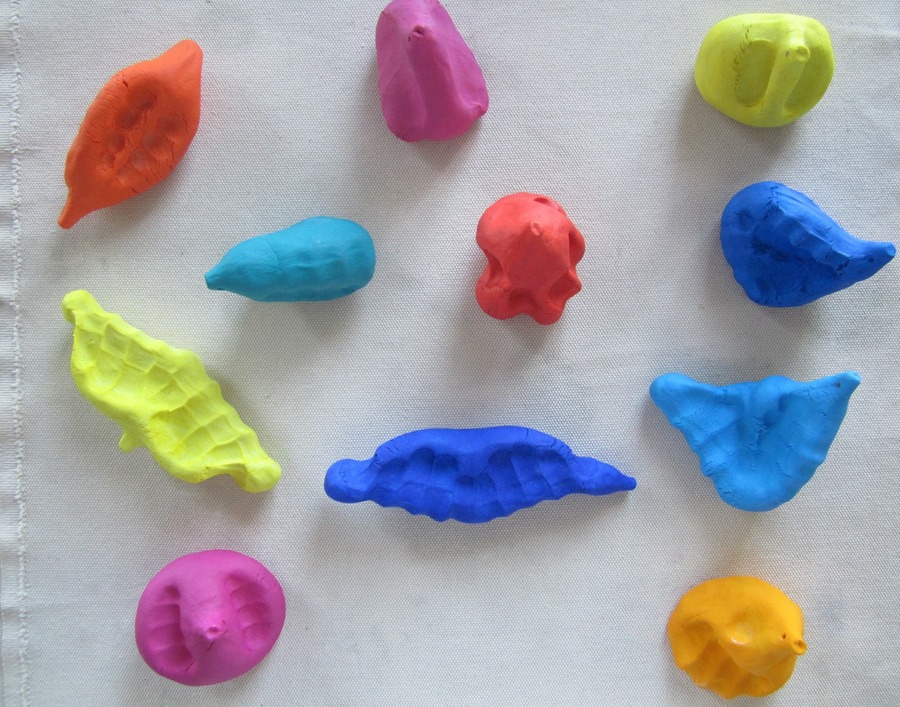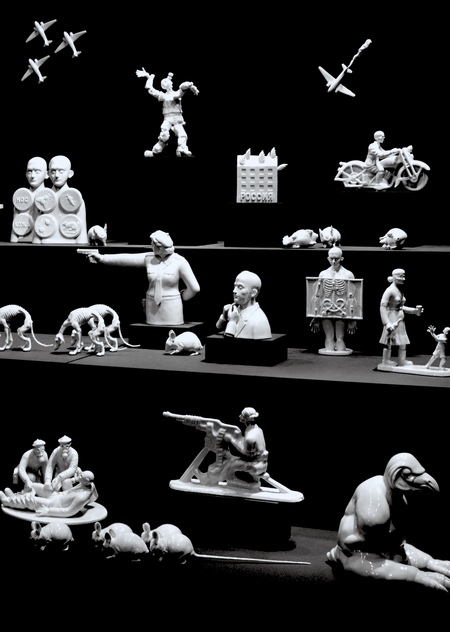
XXIII International Biennale of Ceramics in Valloris
Valloris (France), a traditional crafts center, gained world fame after Pablo Picasso lived here for some time in the 1950s, and had a great impact on the local ceramics. Since 1968, there has been a biennal of modern art and Valloris ceramics. An important part of the biennale has been the competition held since 1968. Its themes are vessels, design and architectural, sculpture and conceptual ceramics. Host country exhibitions began in the 2000s: Japan in 2012, America in 2010, Switzerland in 2008 and China in 2006. In 2014, within the framework of the XXIII biennale, Russia became an invited country, with Pierre-Cristian Broche attending an exhibition in the Eden Hall.
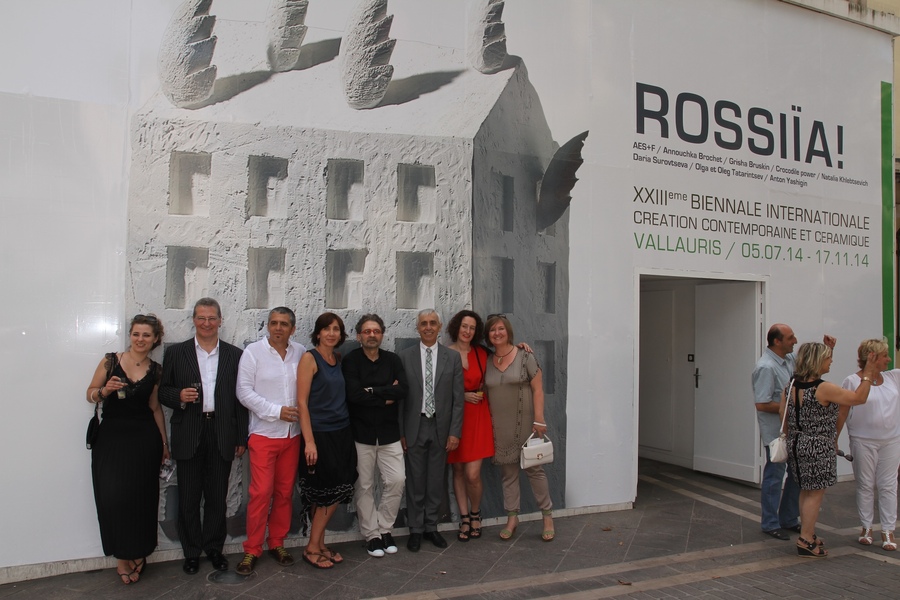
Olga and Oleg Tathartsev, Warehouse installation, 2014
It’s a map of Russia’s natural resources. Different coloured cylinders representing natural wealth are hidden behind the iron bars. This is how artists convey Russia’s desire to preserve its resources. There is a hint in this composition and a hint of an iron curtain, which has again become a pressing problem in Russia’s perception.
Daria Surovtseva, Microcosm installation, 2013
The artist studied from Oleg Tathartsev at the S.G. Stroganov MPGHA. He has lived in Paris for over 10 years, continuing his studies. Daria makes them thin, fragile, as if they were capable of flying out of porcelain. The exhibition presents Malevich’s black square interpretation: «Black square» on a white background turns into a sphere in a black cube.
Annushka Broche, Dreams of the Pavlovna, 2010
Annushka Broche refers to classic literary utopia, «What to do?» Nikolai Chernyszewski and Lenin’s manifesto, with the same name written in 1905, from which the artist moved to porcelain. Vera Pavlovna’s fantasies are recreated on four tables (by number of dreams), and the composition demonstrates the destruction of Utopia. The hero seeks to free herself from bourgeois traditions, to get an education, to become completely free of traditional relationships with her husband. And the last dream of the perfect world is falling apart, only fragments remain. Ceramic and video make it possible to create a massive image of the collapse of Utopia.
Natalia Clebtsevich, «Students for the Role», 2014
Found by an artist and her friends, bones, seeds, sticks are hard to distinguish from small porcelain things. These artifacts are like the details stored in memory, an illustration of the tradition of collecting rare or strange things that can be seen as the whims of memory, often replacing reality with fantasy.
CrocodilePOVER
The work of young Stroganov Petra Holochow and Oksana Simatova graduates complements the work of the Tatarians. Sculpture characters are pumping oil and gas, mastering the Far North, illustrating large-scale industrialization in climatically complex regions. In the exhibition, they are in a dialogue with the sculptures of Surovtseva on the prototic elements of the universe and Natalia Clebtsevich’s «Showers for the Role».
Anton Yashigin, toy installation, 2013
In Russia, the image of ceramics as a form of art was created by Elizabeth and Savve Mamontov as early as the late 19th century. Kamina Michael Vrubel became a sensation in 1900 at the World Exhibition in Paris. More than 100 years later, Russian modern artists who build ceramic objects have been relighted abroad. This exhibition was the first major project in which ceramics are presented as an independent medium. The artists who took part in the Biennale in Valloris became classics and became famous worldwide.
